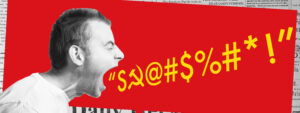
Early in the spring of 1990, we heard the Board of Trustees was meeting at Alderwood Hall. Students made signs and walked over there together. When we entered the courtyard, someone started singing quietly. Soon everyone joined in. It was the gentlest demonstration ever and so moving. We wanted the Trustees to remember the traditions that have been a part of Mills as a women’s college, not just the numbers on the balance sheets.
President Mary Metz stood in the window, watching us, worried, with her fingers laced together. I thought she was a wonderful president. She broke my heart later, but I loved her then.
A few months later, near the end of the school year, the Board of Trustees announced its vote to admit men. They thought it was necessary to preserve Mills’ financial long-term future. President Metz and a few other administrators stood at the back door of Mills Hall to make the announcement, during which students started shouting and crying. President Metz and the others quickly escaped into Mills Hall while some students tried to take the stage and speak to the group about what we should do next. Someone, directed by the administration, cut the power to the microphone.
A couple of hours later, \e to the podium and calmly said, “I want to talk to you about passive resistance.”
It is hard to convey how intensely I heard those words. I had never been particularly active in any cause, but before Silja came to the mike, I had felt helpless because I was convinced the Trustees were wrong and I couldn’t do anything about it. But when Silja spoke, it was like her words opened a path, a possibility. I didn’t know if we could reverse the decision, but we could at least try; and trying was better than not trying, than just letting this terrible decision stand.
When I think of the reasons for the Strike, I think from both my head and my heart. Intellectually, I was convinced the Trustees were wrong, the school was not on the brink of financial disaster and, even if it were, admitting men would not solve the problem but make Mills just another small college among many. Even if coeducation was all there was to it, I’m not sure I would have cared so much. After four years, my heart was soaked in Mills, its long history of women leaders that made it strong and unique. It felt like I was part of an exciting educational experiment that had proved itself a success for more than a century. I couldn’t stand to see it all thrown away.
We set up blockades. As co-editor of the student newspaper The Weekly, I didn’t spend much time on the blockades myself. Instead, I reported on them. Because of the 1989 earthquake, Mills Hall was closed, leaving administrative offices, each blocked by students, scattered around campus. About five students blocked each of the 17 doors in rotating shifts. They’d stand and link arms if an administrator came by. Some students ran messages between the blockades. Others met in the Student Union to strategize. Still others spoke to the local, national and international media that quickly became intrigued with our battle. There were many debates, but the Strike organization was something to be proud of: We operated by consensus — a true women-oriented form of decision-making.
It was hard, exhausting work — worrying about our classes, the Strike, the sometimes critical press coverage, explaining the situation to our parents and trying to get enough sleep — but we had our fun moments too. One night, someone started a dance party in the meadow behind Mills Hall and we learned the Electric Slide. Other times, students gathered in the courtyard behind the Student Union to shave their heads to show solidarity for the Strike.
At The Weekly , we put out four newspapers in two weeks. It was a thrilling, but challenging, story to cover. How could I be a nonpartisan journalist? I believed heart and soul in the Strike. I’m sure we gave short shrift (if any) to those students who didn’t support it. We tried to report factually on events. We made mistakes, but we did the best we could and won a national award for those issues.
Some teachers taught class, some gave exams and others let students get by. My English professor gave me credit for work I did on the newspaper.
Not everyone supported the Strike, of course. Some professors were relentless with their homework and exams. One offical tried to break through a blockade to get his mail. The administration circulated a letter saying the dorms would be closed and graduation would be canceled if the Strike didn’t end. We ignored those threats and administrators never called the police on us. I’m sure it wasn’t worth risking the adverse publicity: David Letterman made us his Top 10 list, students appeared on national talk shows and Phil Donahue put on a Mills t-shirt!
Partway through the two-week Strike, I interviewed President Metz, a small, elegant woman who lived in the President’s Cottage and hosted class parties in her garden every year. Her office door was blockaded, so I met her for the interview at Reinhardt Alumnae House. She told me she had voted for coeducation and I was shocked. I had assumed she had fought the decision. I couldn’t write the words on my notepad and couldn’t think of another question to ask.
Later that afternoon came one of the most moving moments of the Strike. President Metz came to the Mound to speak to the students who stood in wide rings around the mound. When she said she had voted in favor of admitting men, everyone silently turned their backs to her. She choked up briefly, then continued her speech. Thinking about it still brings tears to my eyes.
While we students blockaded and stressed and studied, other groups got their heads together. The Alumnae Association pledged to raise a certain amount of money and help recruit new students if Mills stayed a women’s college; faculty pledged to teach more classes for free; staff made significant concessions; and students promised to help recruit new Mills students. It all added up.
Warren Hellman, then chairman of the Board of Trustees, announced the decision to reverse the vote on the steps of the Tea Shop. Students gave him a yellow beret (the strike color). We popped champagne and danced the Electric Slide. I don’t remember if President Metz was there. She attended our graduation, but the students asked a professor to take over her role of handing out diplomas.
There was a moment, back when the Strike began, when everything came together. Not only did we students gather at the Mound to make a plan, but we followed through with it. We worked together to find creative solutions and to try to ensure everyone’s voice was heard. We didn’t give up when it was hard. We found ways to have fun in the heart of a stressful situation. We brought out the best in each other. We accomplished something amazing. I am always, always proud to say I graduated from Mills College.
Read more related Strike articles here.


